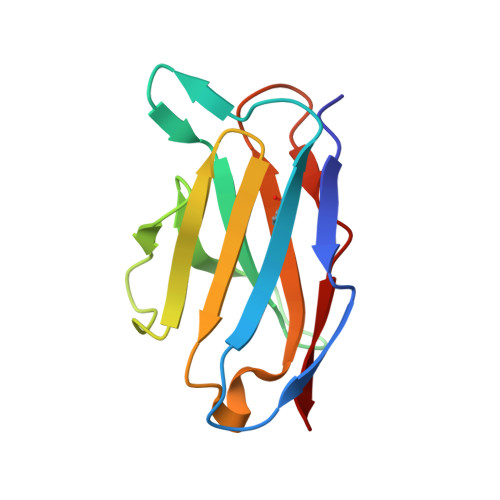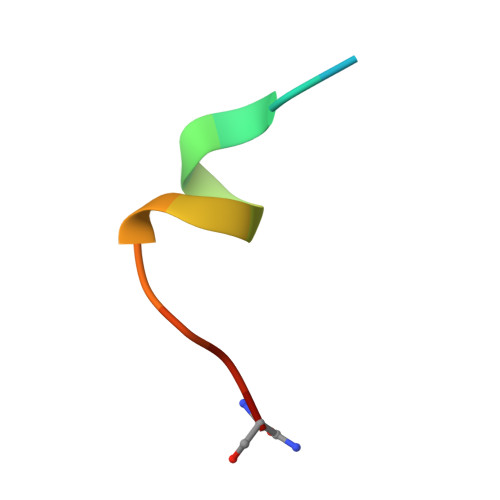Structural basis for epitope masking and strain specificity of a conserved epitope in an intrinsically disordered malaria vaccine candidate
Morales, R.A.V., MacRaild, C.A., Seow, J., Krishnarjuna, B., Drinkwater, N., Rouet, R., Anders, R.F., Christ, D., McGowan, S., Norton, R.S.(2015) Sci Rep 5: 10103-10103
- PubMed: 25965408
- DOI: https://doi.org/10.1038/srep10103
- Primary Citation of Related Structures:
4QXT, 4QY8, 4QYO, 4R3S - PubMed Abstract:
Merozoite surface protein 2 (MSP2) is an intrinsically disordered, membrane-anchored antigen of the malaria parasite Plasmodium falciparum. MSP2 can elicit a protective, albeit strain-specific, antibody response in humans. Antibodies are generated to the conserved N- and C-terminal regions but many of these react poorly with the native antigen on the parasite surface. Here we demonstrate that recognition of a conserved N-terminal epitope by mAb 6D8 is incompatible with the membrane-bound conformation of that region, suggesting a mechanism by which native MSP2 escapes antibody recognition. Furthermore, crystal structures and NMR spectroscopy identify transient, strain-specific interactions between the 6D8 antibody and regions of MSP2 beyond the conserved epitope. These interactions account for the differential affinity of 6D8 for the two allelic families of MSP2, even though 6D8 binds to a fully conserved epitope. These results highlight unappreciated mechanisms that may modulate the specificity and efficacy of immune responses towards disordered antigens.
- Medicinal Chemistry, Monash Institute of Pharmaceutical Sciences, Monash University, Parkville, VIC 3052, Australia.
Organizational Affiliation:


















